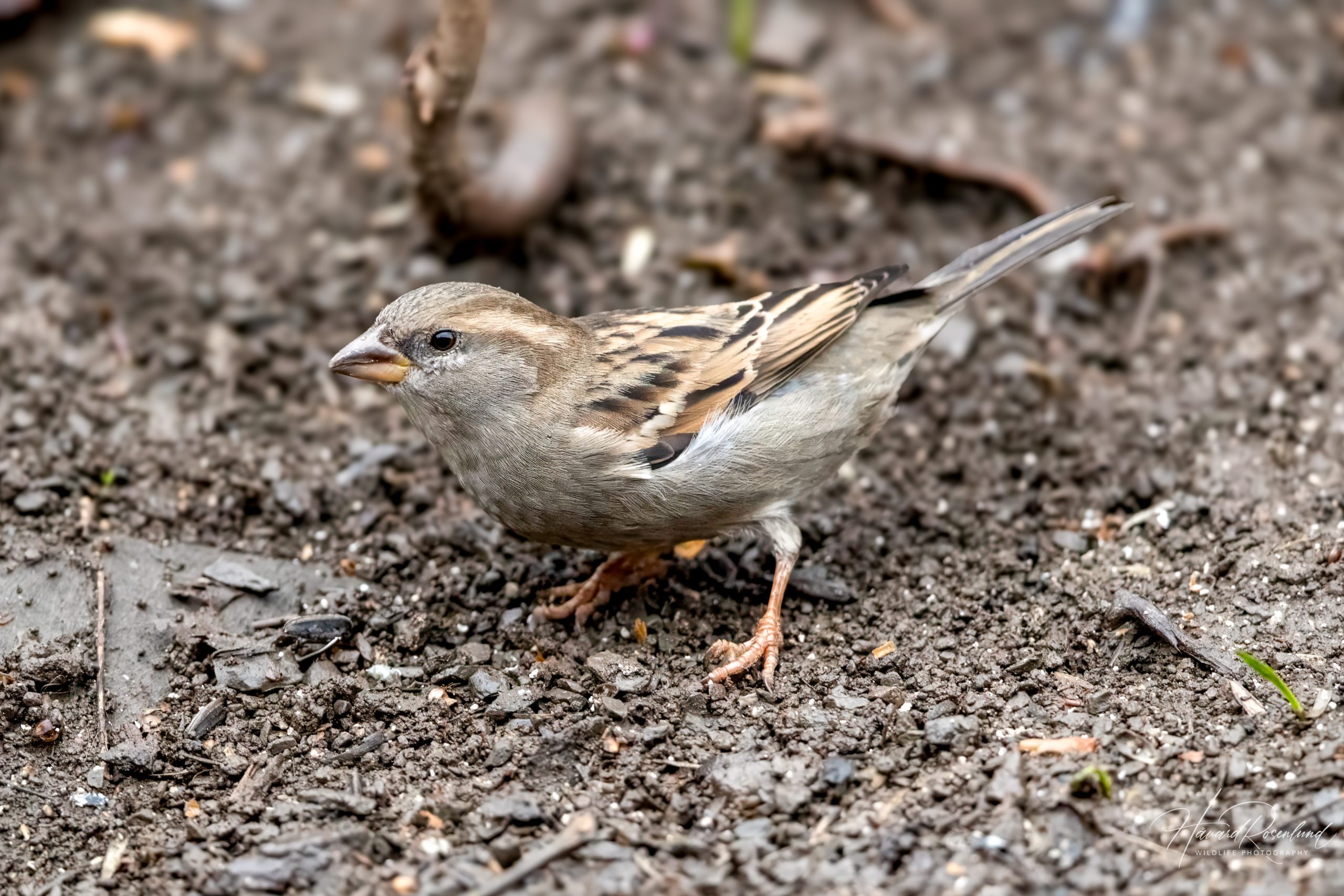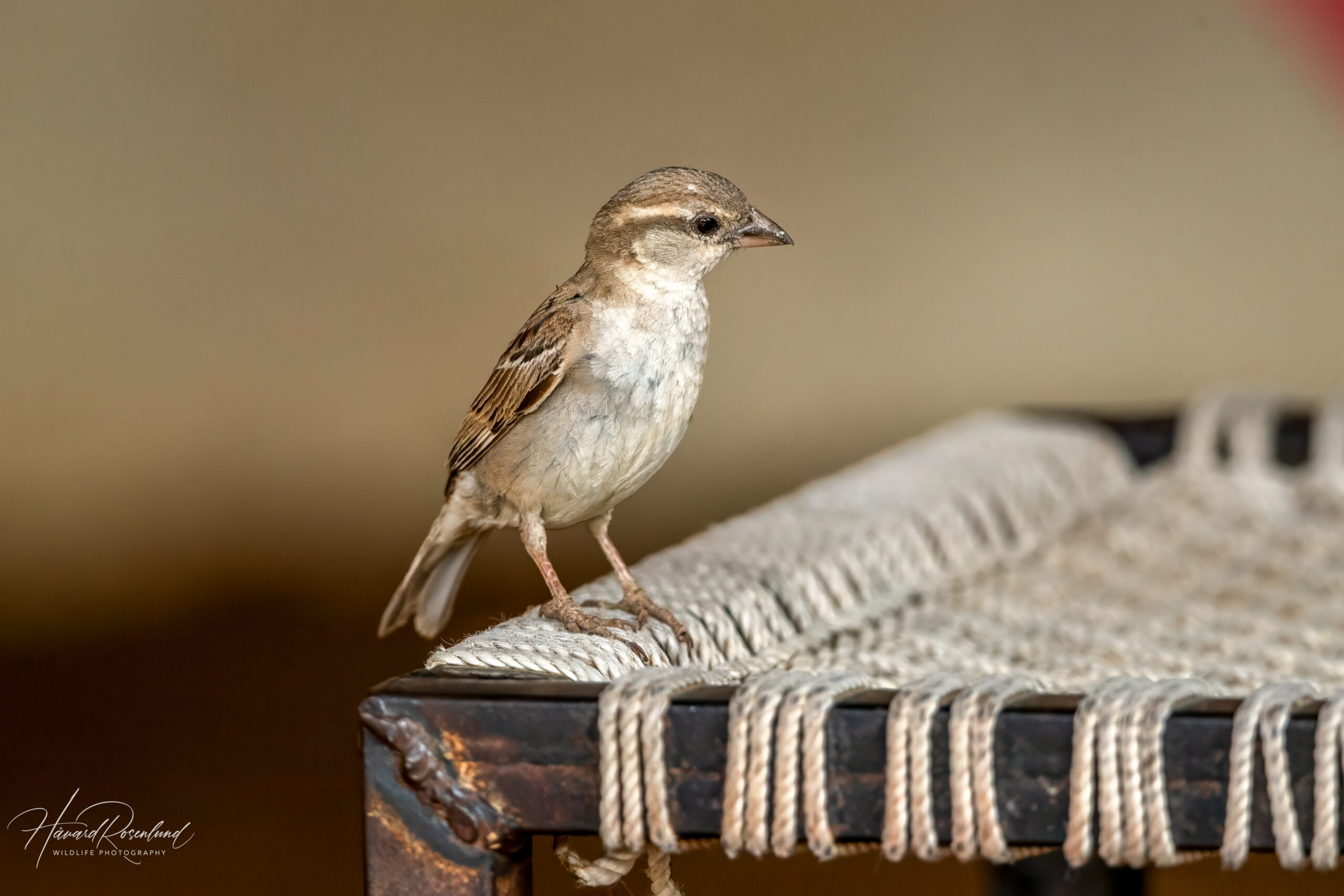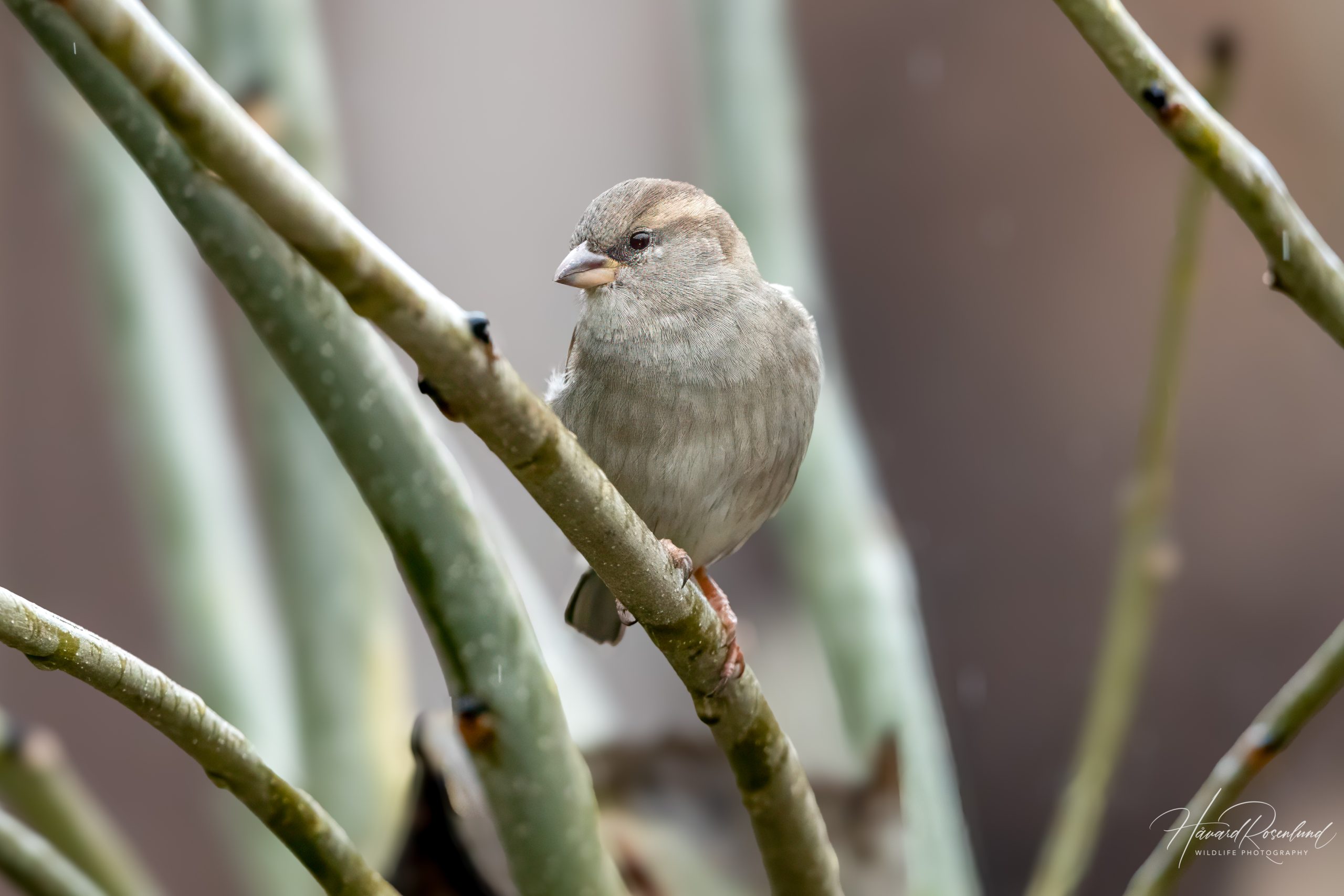House Sparrow
(Passer domesticus)
Description
The house sparrow (Passer domesticus) is a small bird, measuring about 16 cm (6.3 in) in length, with a stout body, short tail, and a strong beak. It is native to Europe, Asia, and North Africa, but has been introduced to many parts of the world, including the Americas, sub-Saharan Africa, and Australia. Their range is extensive, thriving in a variety of climates, and it is one of the most common birds to see in urban areas throughout the world.
Males typically have a grey crown, white cheeks, a black bib, and rufous neck, whereas females and young birds are predominantly brown and grey. It can be confused with the Eurasian tree sparrow (Passer montanus); however, the latter can be distinguished by its smaller size, chestnut crown, and a distinct black spot on its pure white cheeks. The sexes also look alike in this species.
Diet & habitat
House sparrows are highly adaptable and can live in a variety of habitats, including urban areas, farms, and forests. They prefer human-altered environments and are rarely seen in extensive woodlands, grasslands, or deserts. Their diet is omnivorous, consisting mainly of grains and seeds, as well as insects and other small invertebrates. They are known for their ability to exploit food sources provided by humans, such as bird feeders, garbage, and leftover food.
Relationship to humans
House sparrows have a long-standing relationship with humans, and it is believed that it became associated with us at the time we invented agriculture in Asia, about 11,000-12,000 years ago. A population of house sparrows had a gene that allowed them a produce an enzyme called amylase, which helps with the digestion of starch. This made it possible for these birds to eat and digest agricultural grains sufficiently. Since then, the house sparrow has lived alongside humans. Eventually it lead to their global spread, as they were often transported by ships to new locations.
While most house sparrows are well-adapted to urban life and often benefit from human activities, there are populations that remain shy and less associated with human settlements. Particularly one subspecies of house sparrow, the Turkestan house sparrow (Passer domesticus bactrianus), never developed the ability to digest starch, and continues to live as a wild species in central Asia, where it is shy, has a different diet, and mostly avoids people.
Nesting
The breeding season of house sparrows varies by region but generally coincides with the spring and summer months. They are monogamous and often mate for life. Nests are built in a variety of locations, including tree cavities, building crevices, and under roof tiles. Females lay 3-5 eggs per clutch, with an incubation period of about 11-14 days. Fledglings leave the nest approximately 14-16 days after hatching.
Status
The house sparrow is one of the most numerous birds on the planet, and common in urban areas on all continents. However, its population is declining in some parts of its native range, particularly in Europe, where some regions have seen steep declines. These declines are thought to be caused by a few factors, such as fewer nesting sites due to modern building standards, diseases, increased predation by birds of prey and domestic cats, and a decline in insect numbers, which are important for raising young sparrows. Despite this, the species is not considered globally threatened due to its extensive range and large overall population. It is listed as least concern on the IUCN Red List.













